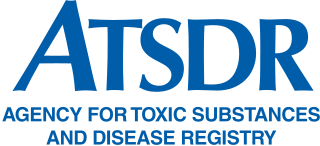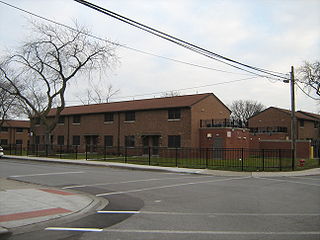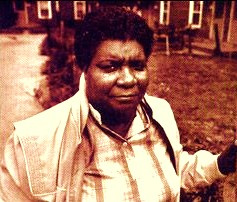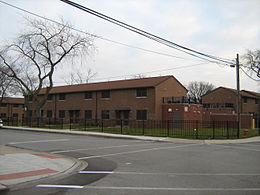
The Environmental Protection Agency (EPA) is an independent agency of the United States government tasked with environmental protection matters. President Richard Nixon proposed the establishment of EPA on July 9, 1970; it began operation on December 2, 1970, after Nixon signed an executive order. The order establishing the EPA was ratified by committee hearings in the House and Senate.

Toxic waste is any unwanted material in all forms that can cause harm. Mostly generated by industry, consumer products like televisions, computers, and phones contain toxic chemicals that can pollute the air and contaminate soil and water. Disposing of such waste is a major public health issue.

Environmental health is the branch of public health concerned with all aspects of the natural and built environment affecting human health. In order to effectively control factors that may affect health, the requirements that must be met in order to create a healthy environment must be determined. The major sub-disciplines of environmental health are environmental science, toxicology, environmental epidemiology, and environmental and occupational medicine.

The Agency for Toxic Substances and Disease Registry (ATSDR) is a federal public health agency within the United States Department of Health and Human Services. The agency focuses on minimizing human health risks associated with exposure to hazardous substances. It works closely with other federal, state, and local agencies; tribal governments; local communities; and healthcare providers. Its mission is to "Serve the public through responsive public health actions to promote healthy and safe environments and prevent harmful exposures." ATSDR was created as an advisory, nonregulatory agency by the Superfund legislation and was formally organized in 1985.

Superfund is a United States federal environmental remediation program established by the Comprehensive Environmental Response, Compensation, and Liability Act of 1980 (CERCLA). The program is administered by the Environmental Protection Agency (EPA). The program is designed to investigate and cleanup sites contaminated with hazardous substances. Sites managed under this program are referred to as Superfund sites. There are 40,000 federal Superfund sites across the country, and approximately 1,300 of those sites have been listed on the National Priorities List (NPL). Sites on the NPL are considered the most highly contaminated and undergo longer-term remedial investigation and remedial action (cleanups).

The Toxic Substances Control Act (TSCA) is a United States law, passed by the 94th United States Congress in 1976 and administered by the United States Environmental Protection Agency (EPA), that regulates chemicals not regulated by other U.S. federal statutes, including chemicals already in commerce and the introduction of new chemicals. When the TSCA was put into place, all existing chemicals were considered to be safe for use and subsequently grandfathered in. Its three main objectives are to assess and regulate new commercial chemicals before they enter the market, to regulate chemicals already existing in 1976 that posed an "unreasonable risk of injury to health or the environment", as for example PCBs, lead, mercury and radon, and to regulate these chemicals' distribution and use.

Riverdale is one of the 77 official community areas of Chicago, Illinois and is located on the city's far south side.

Environmental issues in New York City are affected by the city's size, density, abundant public transportation infrastructure, and location at the mouth of the Hudson River.

WE ACT for Environmental Justice is a nonprofit environmental justice organization based in Harlem, Manhattan, New York City. The organization was founded in March 1988 to mobilize community opposition to the city's operation of the North River Sewage Treatment Plant, and the siting of the sixth bus depot in Northern Manhattan.
Air pollution is the introduction of chemicals, particulate matter, or biological materials into the atmosphere, causing harm or discomfort to humans or other living organisms, or damaging ecosystems. Air pollution can cause health problems including, but not limited to, infections, behavioral changes, cancer, organ failure, and premature death. These health effects are not equally distributed across the U.S population; there are demographic disparities by race, ethnicity, socioeconomic status, and education. Air pollution can derive from natural sources, or anthropogenic sources. Anthropogenic air pollution has affected the United States since the beginning of the Industrial Revolution.

The Office of Environmental Health Hazard Assessment, commonly referred to as OEHHA, is a specialized department within the cabinet-level California Environmental Protection Agency (CalEPA) with responsibility for evaluating health risks from environmental chemical contaminants.

Uranium mining and the Navajo people began in 1944 in northeastern Arizona, northwestern New Mexico, and southeastern Utah.

The Kettleman Hills Hazardous Waste Facility is a large hazardous waste and municipal solid waste disposal facility, operated by Waste Management, Inc. The landfill is located at 35.9624°N 120.0102°W, 3.5 mi (5.6 km) southwest of Kettleman City on State Route 41 in the western San Joaquin Valley, Kings County, California.
The Environmental Health Coalition (EHC) is an organization founded in 1980 by Diane Takvorian and Tony Pettina, and includes a staff of 19 other individuals. Its goal is to achieve environmental and social justice in San Diego, California. Its work mainly concerns low income communities and communities of color in San Diego. It also works to affect public policy both locally and nationally. The coalition believes that by working closely with communities, it will be able to help mitigate the excessive amounts of pollution and other environmental hazards such as hazardous air pollution (HAPs), toxic waste disposal facilities, or superfund sites. One of its main goals is to prevent environmental injustice in San Diego and use that work to influence national environmental justice issues. Its mission statement is as follows:
Communities for a Better Environment (CBE), previously known as Citizens for a Better Environment, is a policy-focused non-profit organization started in 1971 by Marc Anderson and David Come in Chicago, Illinois. In the late 1970s and early 1980s, CBE expanded to California, Wisconsin, and Minnesota. CBE established itself in San Francisco in 1978 and expanded to Los Angeles in 1982. Today, CBE is based in Oakland, CA and Huntington Park, CA, effecting positive change in communities throughout California, including Richmond, East Oakland, Vernon, Huntington Park, Boyle Heights, Pacoima, Wilmington, and SE Los Angeles. CBE was the first environmental organization to practice door-to-door canvassing by directly involving community members. In 1980, CBE won the United States Supreme Court decision on Village of Schaumburg v. Citizens for a Better Environment 444 U.S. 620, protecting the 1st and 14th Amendment Rights of door-to-door activists with CBE and countless other public interest organizations. CBE's early combination of grassroots organizing with research and legal work provided the innovative edge needed to challenge large-scale industries and refineries, and government policies.
Toxic hotspots are locations where emissions from specific sources such as water or air pollution may expose local populations to elevated health risks, such as cancer. These emissions contribute to cumulative health risks of emissions from other sources nearby. Urban, highly populated areas around pollutant emitters such as old factories and waste storage sites are often toxic hotspots.

Exide is one of the world's largest producers, distributors and recyclers of lead-acid batteries. Lead-acid batteries are used in automobiles, golf carts, fork-lifts, electric cars and motorcycles. They are recycled by grinding them open, neutralizing the sulfuric acid, and separating the polymers from the lead and copper. In the US, 97 percent of the lead from car batteries is recycled - which is the highest recycling rate for any commodity. Most states require stores to take back old batteries.

Hazel M. Johnson was an environmental activist on the South Side of Chicago, Illinois. She is considered to be the mother of environmental justice.
Environmental racism is a form of institutional racism, in which people of colour bear a disproportionate burden of environmental harms, such as pollution from hazardous waste disposal and the effects of natural disasters. Environmental racism exposes Native Americans, African Americans, Asian Americans, Pacific Islanders, and Hispanic populations to physical health hazards and may negatively impact mental health. It creates disparities in many different spheres of life, such as transportation, housing, and economic opportunity.

The Neighbors for Environmental Justice (N4EJ) is an environmental justice group located on Chicago's Southwest Side. N4EJ was founded in 2017, in response to happenings of a local asphalt plant, MAT Asphalt. As an environmental organization, N4EJ focuses its efforts on environmental justice, advocacy, public outreach, and education. Additionally, N4EJ collects environmental data and meets with local officials to discuss the prevention of future developments such as MAT Asphalt.















